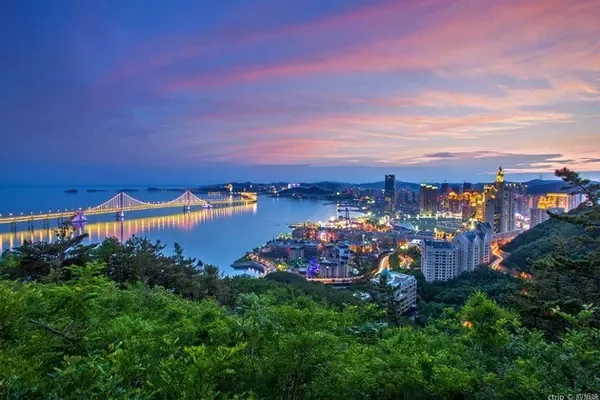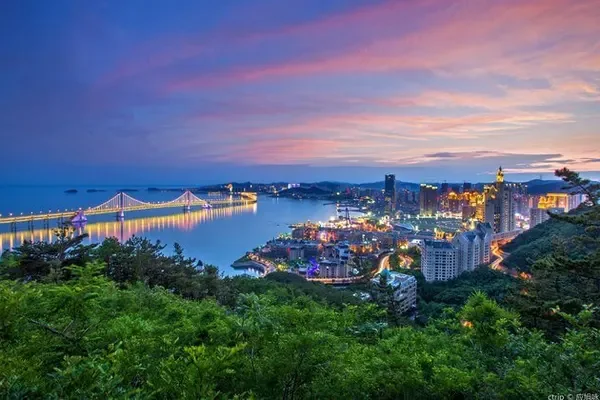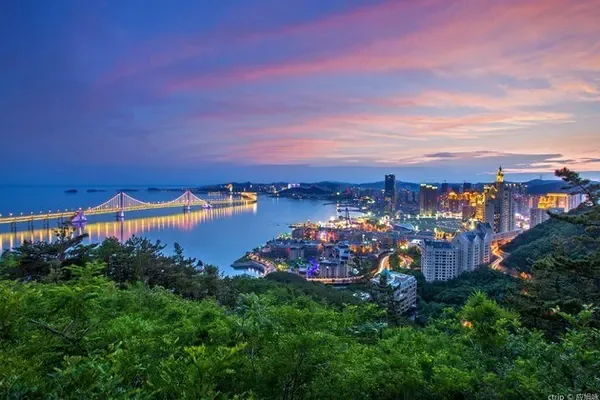It was a rare good weather for Qingming Festival. After two days of busy work, I finally had a free day. After discussing with my lover, I decided to go to Guji Mountain for an outing. Guji Mountain is located at the junction of Fangshan District and Mentougou District. It is 711 meters above sea level and belongs to Xishan Mountain. The mountains are gentle and there are many historic sites.
mountain path
Going up from Fangshan Beicheying, there are controls. You can go up from Lujiatan in Mentougou, but you need to walk about 7 kilometers. If you go up from Beicheying, you can drive to the parking lot under Lingjiu Temple, but you need to go through control. .
The Lingjiu Temple faces south and is a building in the Yuan Dynasty. It consists of two main halls and a mountain gate. There is a stone tablet behind the mountain temple, which was erected in the fourth year of Taikang in the Liao Dynasty (1078). In the letter "Records of Zhang Jun in Liangxiang County, Daliao Xijin Prefecture (now Beijing) reading Tibetan scriptures in Gujishan Temple", most of the temple was damaged, and most of them were rebuilt. When I went there, the gate was locked. Most cannot be visited. .
bodhi field
The newly built hall is still empty
There is a two-story building opposite the Zen Temple. It is estimated that it used to be the Temple of the Mountain or the Temple of the Dragon King. Now it is in disrepair, and there is nothing inside.
Walking along Gujishan Road, there is an ancient temple called Yuantong Temple on the way, and now there is only one Yuantong Temple left.
Yuantong Hall
The Yuantong Hall was built during the Zhengtong period of the Ming Dynasty. The hall is hexagonal and made of bricks and stones. The plaque on the hexagonal peak is "Yuantong Hall". It is still a stone coupon gate. There are also two pillars in the hall, and there are dragons carved on the top of the hall. , and colorful patterns.
Yuantong Temple Ruins
Yuantong Temple Ruins
There are two steles on the left and right in front of Yuantong Hall. From the inscriptions, it can be known that "Gujishan Lingjiu Temple" was called "Lingyan Temple" in the Yuan Dynasty, and it was first built in Tang Tiancheng in the Five Dynasties, when it was called "Gujishan Temple". It was the most prosperous in the Yuan Dynasty. According to the inscriptions, after the temple was completed, "the Huayan Conference was set up, 100,000 lamps were lit, and thousands of monks were eating. At the beginning of the fall, only one monk guarded the temple, and even hundreds of people gathered there. When the Son of Heaven heard about it, he appointed Gaoli monk Tianzhan as the master of Haiyin Yuanming Tongjiao Miaode Elder, so as to unify the crowd." From this we can see the grand occasion of that year.
Looking up along the road, you can see two ancient pagodas, one white and one black.
Gu Jishan
Bell Tower
The name of the pagoda is the Shou Pagoda of Prajna Temple. According to research, it was built in the Ming Dynasty (around 1368 A.D.). It has a stone structure, an octagonal plane, nine floors, and a pavilion style. There are only two floors left of the tower, which have been reconstructed as they were.
Beside the tower stands a stele of Fangshou Fang in the Ming Dynasty.
The Black Tower is the Whip Tower
The name of the tower is Gujishanyuan Tower, which was built in the Liao Dynasty (around 1100 A.D.). It has a brick structure, a hexagonal plane, seven floors, and a height of 7 meters.
Distributed in a triangle with the Bell Tower and the Whip Tower is the tomb of an eunuch in the Ming Dynasty.
Zhanggong Shouyu palm print
The inscription on the door of the tomb of Zhang Gong's tomb reads "Zhang Gong's Shouyu is printed in the palm of the inner government's supply storehouse". The door knocker is a relief of a pair of animal heads, still lifelike.
The hexagonal stone column-shaped stone tablet is engraved with the tomb of the eunuch Nanxi Zhanggong
Zhang Cemetery
According to the inscription on the hexagonal stone stele, it can be known that the eunuch buried in this tomb is the palm print of a Ming Dynasty inner government supply storehouse, and his official position should be the fourth rank.
East Tower
About 500 meters away from the eunuch's tomb, there is a bowl-shaped white pagoda, commonly known as the East Pagoda, named Guji'an Sakyamuni Relic Pagoda, also known as the Monk Pagoda. , 3.2 meters high.
The three pagodas in Guji Mountain are exquisitely carved. Most of the Buddha statues in the niches have been stolen. Only from the existing ones, it can be seen that they are treasures in the stone pagodas.
About one kilometer away from the East Pagoda, there is the ruins of Gaoqiao Temple. There are damaged houses on the way. Judging from the existing remains, they should be built with materials from the demolished temples.
destroyed house
Takahashi Temple Ruins
Takahashi Temple Ruins
Gaoqiao Temple, formerly known as Guangzhi Temple, is commonly known as Gaoqiao Temple because of the stone bridge built in the valley between the pagoda and the mountain gate. The halls and courtyard walls of Takahashi Temple are ruined and ruined. Gaoqiao Temple is surrounded by mountains on three sides, leeward, it is a good place.
Guji Mountain is gentle and suitable for hiking and red leaves in autumn. It is a good place for hiking and leisure.



